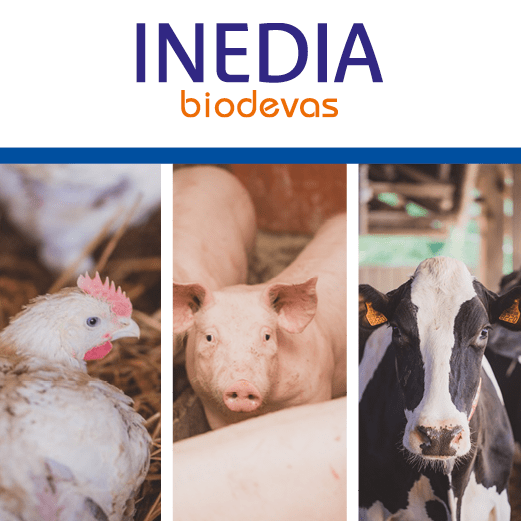If you’re looking at heterogeneous raw material quality, give INEDIA a try!
This year’s climatic conditions, particularly the rainfalls before harvest, have made the quality of raw materials uneven. Wheat, for example, is showing irregular specific weights and heterogeneous protein content depending on its region of origin.
In addition to the poorer raw material quality, the summer rains increased the risk of mycotoxin contamination and other contaminants in feed. Formulation solutions should be considered for feed for livestock, especially for swine, poultry and ruminants species that are extremely sensitive to contaminants and mycotoxins.
In addition to the feed intake drop that contaminated feed can cause, livestock’s digestive and immune systems are heavily sollicitated to fight the consumption of mycotoxins.
In this particular context, INEDIA, a solution developed by Biodevas Laboratoires, can not only manage mycotoxins but also more generally all contaminants in feeds.
Thanks to its innovative non-binding technology, animals’ tolerance threshold to contaminants is increased and zootechnical performance are supported.
As a non-binder, INEDIA has the advantage of not being specific to one mycotoxin or one contaminant. This particularity was verified during two trials conducted in pigs and poultry on feed contaminated with a mix of mycotoxins (aflatoxins, fumonisins and DON) where performances were better compared to a popular mycotoxin binder on the market containing clay, enzymes and plant extracts.
For example, broilers supplemented with INEDIA had a higher body weight at the end of the trial (D21) (764 g) than those fed a mycotoxin-contaminated feed with the popular premium binder (714.28 g).
The pig trial produced similar results where the body weight of the animals fed INEDIA was higher (20.1 kg) than that of the animals fed a contaminated feed and the popular premium binder on the market (19.3 kg) made up of clay, enzymes and plant extracts.
The broiler trial also showed that the body weight of animals fed with INEDIA was higher than the body weight of animals in the negative control group (747.79 g) fed only with a standard, uncontaminated feed. This data shows that even with no contaminants in the feed, INEDIA improves the growth of the animals.
That is how INEDIA works: by stimulating animals’ xenobiotic pathway and strengthening their resilience to contaminants, it allows them to ingest and eliminate contaminants without suffering the consequences in terms of their performance.
This makes it a comprehensive solution which is adapted to the needs of the recent harvests.
For more information, please visit the INEDIA product page.
